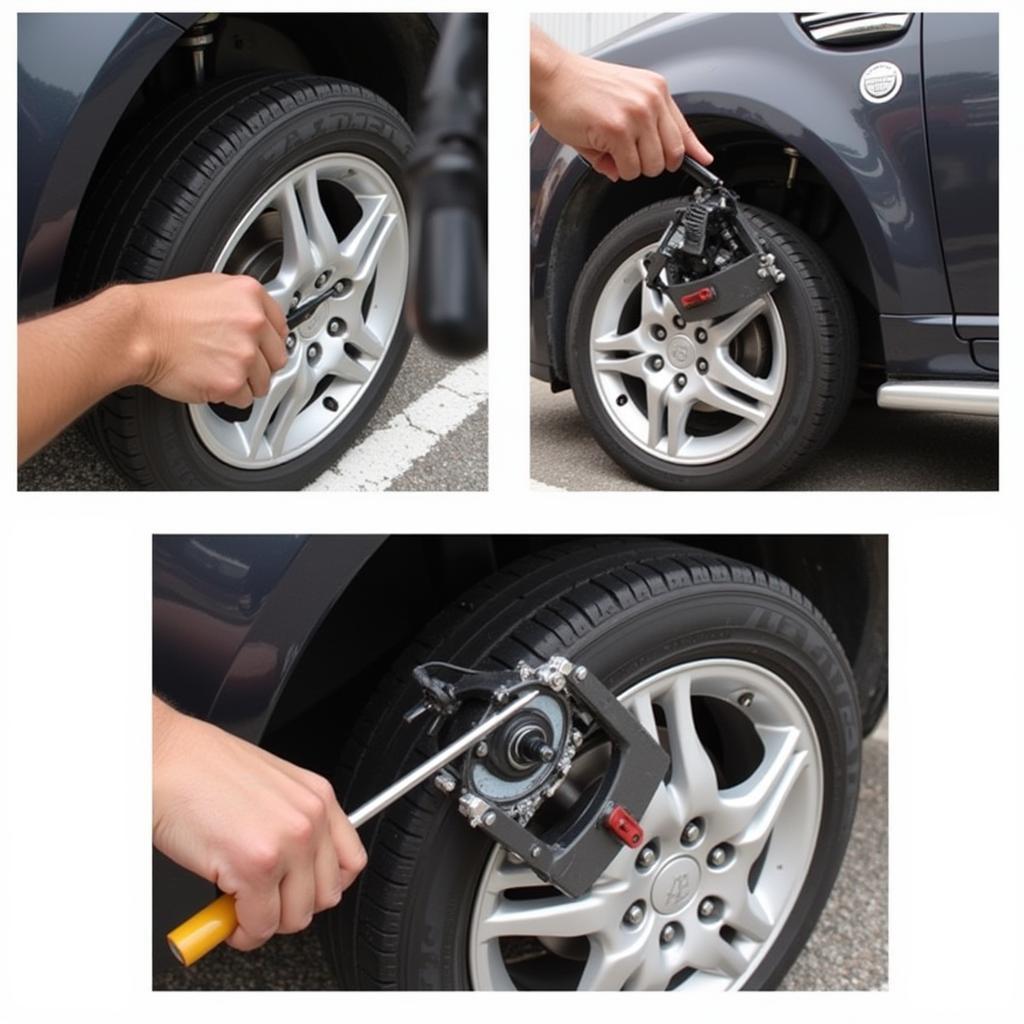The emergency brake light warning indicator on your dashboard is a crucial safety feature, alerting you if the parking brake is engaged. However, sometimes this light stays on even when the brake is released, causing confusion and concern. This guide will explore common reasons for a persistent emergency brake light and provide practical steps on how to turn the emergency brake light warning indicator off. We’ll cover various troubleshooting techniques, from simple checks to more advanced solutions.
Understanding the Emergency Brake System
The emergency brake, also known as the parking brake or handbrake, is a mechanical system designed to keep your vehicle stationary. It’s essential for preventing unintended movement when parked, especially on inclines. The warning light is connected to a switch activated by the brake lever or pedal position. When the brake is engaged, the switch closes, completing a circuit and illuminating the warning light. Understanding this basic mechanism is the first step in diagnosing why the light might stay on unnecessarily.
If you’re dealing with a dead battery and need to jump-start your car, a dead car battery charger can be a lifesaver.
Common Reasons for a Stuck Emergency Brake Light
Several factors can cause the emergency brake light warning indicator to stay on even when the brake is disengaged. These include:
- Low Brake Fluid: Low brake fluid levels can trigger the warning light. This is because the system pressure drops, which can be misinterpreted as an engaged parking brake.
- Faulty Brake Light Switch: A malfunctioning switch can send a false signal to the dashboard, causing the light to remain illuminated.
- Worn Brake Cables or Linkage: Over time, the cables or linkage connecting the brake lever/pedal to the brake mechanism can wear or become stretched, preventing the brake from fully disengaging.
- Stuck Parking Brake: Sometimes, the parking brake itself can become physically stuck due to rust, debris, or freezing temperatures.
How to Turn Off the Emergency Brake Light Warning Indicator
Here’s a step-by-step guide on how to troubleshoot and fix a persistent emergency brake warning light:
- Check the Brake Fluid Level: Locate the brake fluid reservoir under the hood and ensure the fluid level is between the minimum and maximum markers. If it’s low, add the correct type of brake fluid as recommended in your owner’s manual.
- Inspect the Brake Lever/Pedal: Make sure the lever is fully released or the pedal is fully up. Sometimes, a slight obstruction can prevent complete disengagement.
- Test the Brake Light Switch: If the fluid level is correct and the brake is disengaged, the switch might be faulty. Locate the switch (usually near the brake pedal or lever) and test it with a multimeter or by temporarily bypassing it.
- Check for Stuck Cables or Linkage: Inspect the cables and linkage for any signs of wear, damage, or obstruction. Try lubricating the cables or adjusting the linkage to ensure proper movement.
- Address a Stuck Parking Brake: If the parking brake is physically stuck, try rocking the vehicle back and forth while gently applying and releasing the brake. If this doesn’t work, you may need to manually release the brake mechanism at the wheels.
Sometimes a low battery warning can be related to the emergency brake light issue. Check out this article on vauxhall astra low battery warning for more information.
 Releasing a Stuck Parking Brake Mechanism
Releasing a Stuck Parking Brake Mechanism
When to Seek Professional Help
If you’ve tried these steps and the warning light persists, it’s best to consult a qualified mechanic. They have the expertise and tools to diagnose and repair more complex issues within the braking system. It’s important to address this promptly as a faulty braking system can compromise your safety. You should also be aware of other warning signs car battery dying.
Conclusion
The emergency brake light warning indicator is a vital safety feature, and a persistent light shouldn’t be ignored. By following this guide, you can often identify and resolve the issue yourself. However, don’t hesitate to seek professional assistance if the problem persists or you’re unsure about any step in the process. Taking care of your vehicle’s braking system is crucial for your safety and the safety of others on the road. Keeping your car’s electronics in good working order is also important, which may involve finding reliable places near me that install car radios. Don’t delay in addressing a persistent emergency brake light warning indicator to ensure your vehicle’s braking system is functioning correctly.
FAQ
- What does the emergency brake light look like? It’s usually a red circle with a “P” inside or an exclamation mark within parentheses.
- Is it safe to drive with the emergency brake light on? It depends. If the brake is actually engaged, it’s not safe. If the light is on due to a faulty sensor, it might be safe, but it’s best to have it checked.
- Can I replace the brake light switch myself? Yes, it’s usually a relatively simple DIY task. Refer to your owner’s manual for specific instructions.
- How often should I check my brake fluid? Check it at least once a month or as recommended in your owner’s manual.
- What type of brake fluid should I use? Consult your owner’s manual for the correct type. Using the wrong type can damage the braking system.
- Can a low car battery cause the emergency brake light to come on? Not directly, but a severely low battery can cause erratic behavior in various electrical systems, including warning lights. Consider replacing your 2013 honda accord key fob battery if you suspect a low battery.
- What if the emergency brake light flashes intermittently? This could indicate a more serious issue with the braking system and requires immediate attention from a qualified mechanic.


